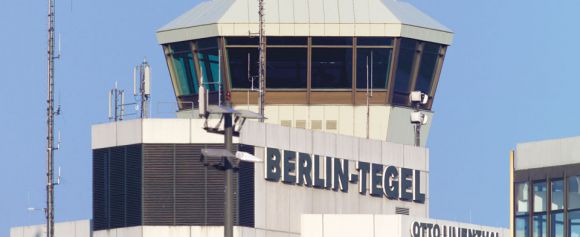
After our short one hour flight from Copenhagen on SAS, we soon landed in Berlin. Flying into the city, I tried to absorb as much as I could see from the plane and was so surprised at the size of the city. At just over 344 square miles and with a population of over 3.5 million, Berlin is quite a large city. And because of how big it is, I might have to come back on another trip to really explore the whole city. When I get around to doing that, I’m going to use Cost of Living in Berlin by Destination Scanner to help give me a better idea of what the cost of living is like and whether this is something I would be able too. Fingers crossed it is!
When we landed, it was then necessary to board another bus at Berlin’s Tegel airport (TXL) to get transported to the main terminal. As we hadn’t checked any bags, we were able to simply leave the airport. I had stopped for us to pull out our passports thinking we would need to present them, but I guess since our flight originated in the EU we didn’t need to present them to anyone. I really wanted another passport stamp, too!
The Berlin Tegel airport is currently the main international airport in Berlin. The two main airlines that operate out of Tegel are Air Berlin and Lufthansa, with each handling around 30% of the scheduled commercial flights. The area where the airport sits was once a military training area that was destroyed in Allied air raids during World War II. With the impending opening of the new Berlin Brandenburg Airport (BER), Tegel airport as well as Schönefeld airport were scheduled to close. However, this has not yet happened. Berlin Brandenburg Airport was scheduled to open in 2010, but as of January 2013, the only certainty is that it will not open prior to 2014. The creation of a new airport was supposed to combine and centralize aviation in this area of Germany, but construction issues, money, and politics have caused excessive problems and delays.
Signage inside the terminal is minimal, but we were able to locate an elevator to the main floor and from there, we exited the terminal. There we saw hoards of people who were waiting for the bus. Fully expecting to find a kiosk (or kassensysteme as they say in German) that would sell tickets, we wandered through the crowds for a minute or two before a woman in a uniform selling tickets began speaking to me in German. I purchased two tickets from her (€2.40 each) and she motioned to the bus marked TXL Alexanderplatz as the one we would need to take.
Unbeknownst to us, there is something of an honor system with public transport in Berlin. You pay for your fare but you don’t present it to anyone in particular. However, undercover agents do work and will bust anyone with a hefty fine caught without a ticket. Riding without a ticket here is called schwarzfahren (“black rider” or “driving black”) and although many do it, you probably should avoid it completely if you’re visiting. Thanks to social media, there are FaceBook pages dedicated to schwarzfahren, like this one, where you can see where the “controllers” are if you need to avoid them. I say pay the fare and relax while traveling instead of trying to dodge the system.
 |
| Berlin Hauptbanhof |
We rode the bus about five stops or about 22 minutes to Berlin Hauptbanhof, the main train station and crossed the street from where we were let off. Berlin Hauptbanhof opened in May 2006 on the site of the historic Lehrter Bahnhof, the main train station that was severely damaged in World War II. After many years of planning and several years of construction, Berlin Hauptbanhof was completed and is an impressive site from the outside as you approach it, as you can see in the picture above.
 |
| Berlin Hauptbanhof |
Inside we walked through the terminal from the one side to the other to where there was a bus stand. The terminal is a huge, modern, multi-story building with shops, restaurants, and more. 1,800 trains call at the station daily and the daily number of passengers is estimated at 350,000. In German the word “Hauptbahnhof” or central railway station is often abbreviated as “Hbf” so you might see it listed as “Berlin-Hbf.”
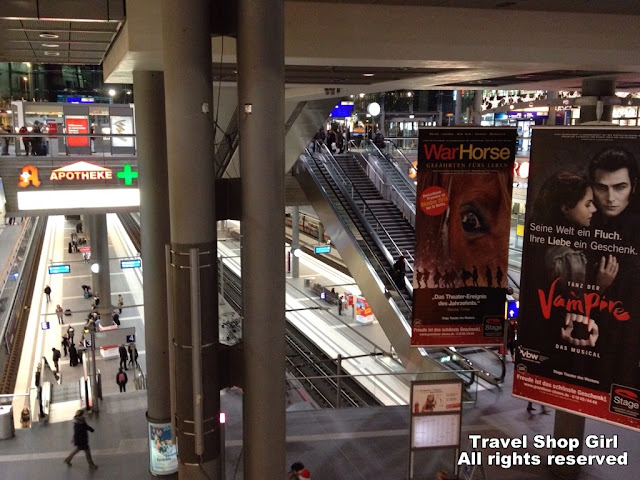 |
| Inside Berlin Hauptbanhof |
Although it was dark outside, inside it is well lit and could almost pass for daytime. Inside you can find a branch of the supermarket Kaisers Supermarket; restaurants like Burger King, Dunkin’ Donuts, Pizza Hut, Starbucks, Hopfingerbräu, and stores like The Body Shop, Esprit, Casa Moda, and Bijoux Terner.
Suitcases in tow behind us, we walked outside across a small parking lot to a bus stand where people were congregating. According to the digital display on the marquee at the bus stop, we could see that we had about 19 minutes until the bus was to arrive. Not having a bus ticket in hand was making me worried so we decided to go back inside and try to buy tickets.
Walking back toward the rear of the station, we located the visitor center, as you can see in the picture above with the red arrow pointing to it. There were only a few people inside so we were able to get right in and get assistance with tickets.
The employee helping us recommended that we buy the BerlinWelcome card with a three day transport ticket for under €30 each. Had I planned correctly, I could have pre-purchased these online and printed out the vouchers to take along with us.
The advantages of Berlin WelcomeCard:
- free travel with public transport in the entire city of Berlin (tariff zone Berlin AB) or alternatively in Berlin and Greater Berlin Area (tariff zone ABC, incl. airport Berlin-Schönefeld and city of Potsdam)
- at least 25% and up to 50 % discounts on 200 tourist highlights
- incl. restaurants
- incl. Family friendly offers
- incl. City map and guide
Afterwards we wandered back outside and waited for the bus. Having the display count down until the bus arrives was extremely helpful, especially for us.
Now we could relax for a few minutes on the 142 bus as it was taking us directly to our final destination in Prenzlauer Berg. I chose this area as it was central to everything we needed and was between Brandenburg Gate and the city center. We met Ezra, our host, dropped off our bags, and went in search of dinner.
I was worried that it might be hard to find vegetarian restaurants in Germany, but it wasn’t hard at all. Our first encounter with Mirchi would not be our last. Mirchi Singapore Restaurant is located at Oranienstrabe 202/203, 10999 Berlin, Germany (Mitte).
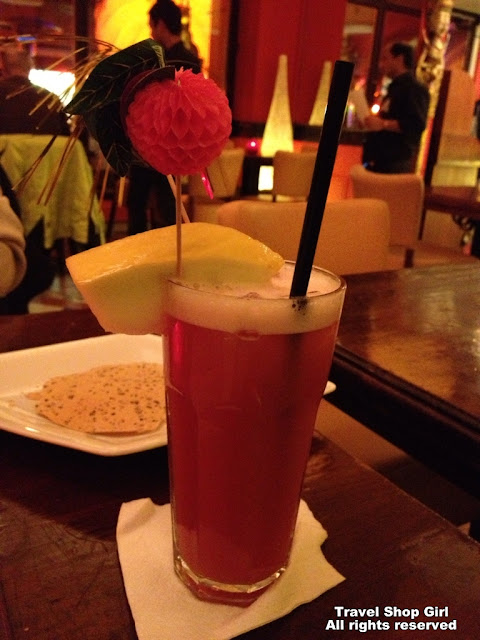 |
| Zombie anyone? |
To start off the meal, I ordered a Zombie (white and brown rum, Old Pascas 73% rum, Triple Sec, cherry liqueur, orange and lemon juice) from the drink menu while Rich had the first German beer of this trip. They also brought over some pappadums, which we quickly devoured.
 |
| Mango Indiana |
Soup #7 Mango Indiana: Light coconut cream soup with exotic vegetarian Alphanso mangoes, lime leaves, and basil. I cannot explain how highly addictive this soup was, but let’s just say that it wasn’t long before we went back for more.
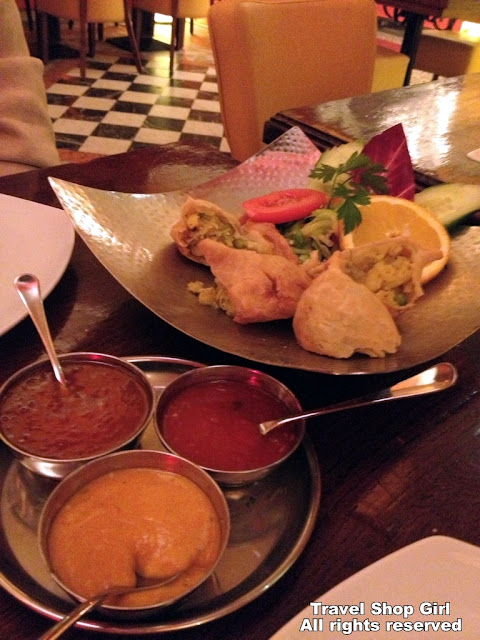 |
| Malaysian Samosas |
Appetizers: #11 Malaysian Samosas: Potato fried dumplings with a filling made ??of glass noodles, cashews, raisins, and crunchy vegetables. Three yummy sauces accompanied our meal, too.
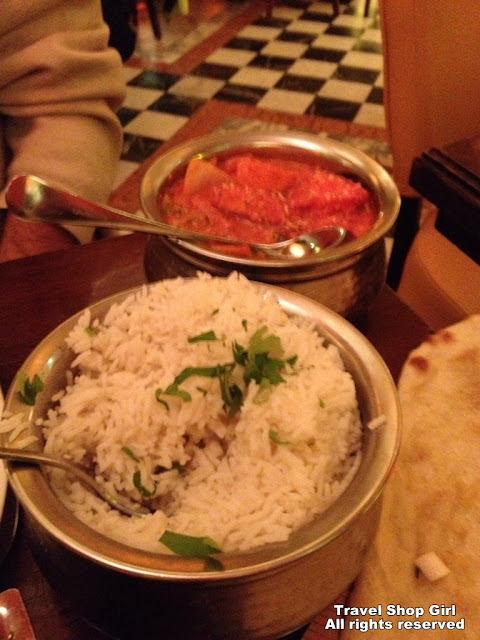 |
| Cheese Bhutan |
Entrees: Rich was all about #34 Cheese Bhutan: Fresh Indian cheese in spiced sauce of onions, peppers, and lime leaf along with an abundance of rice.
 |
| Veg. Tutong |
I was far more interested in #36 Veg. Tutong: Various fresh vegetables in delicious massaman curry with potatoes, coconut milk, and peanuts. Naan? Oh yes, there was naan, too, and it was delicious.
This was a perfect meal to start our visit to Berlin and I was ecstatic that our travels had been effortless with little to no hassles whatsoever. I think it is safe to say that we had started to fall in love with Berlin almost as soon as we had arrived there. Come back to read about more of our adventures in Berlin throughout our stay over New Year’s.




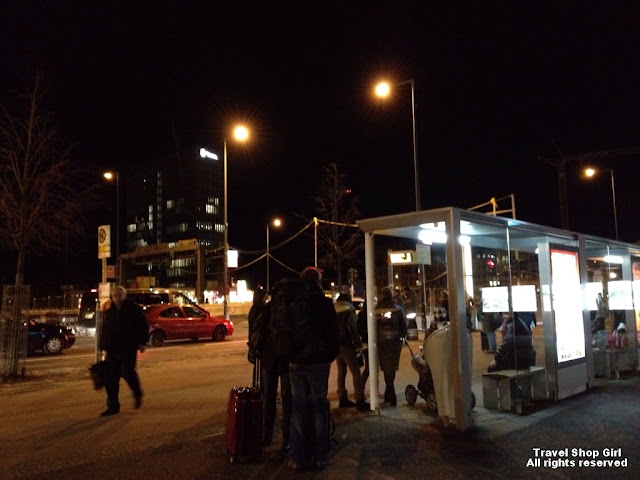
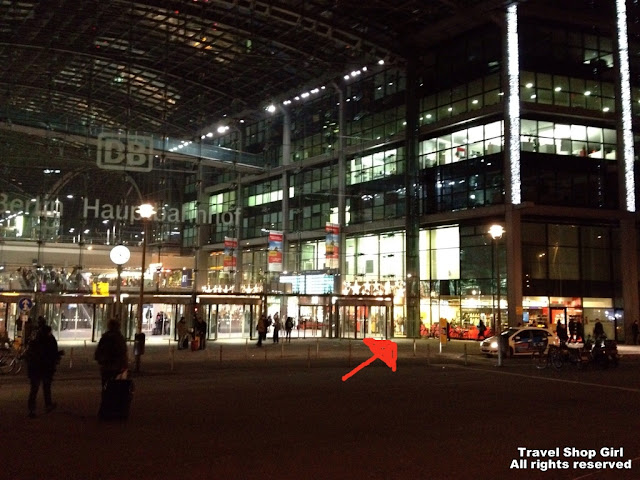
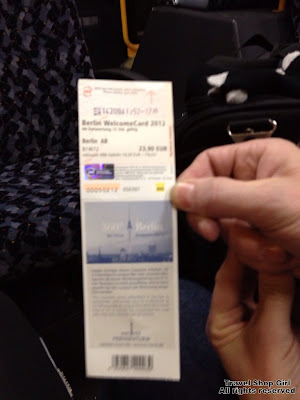
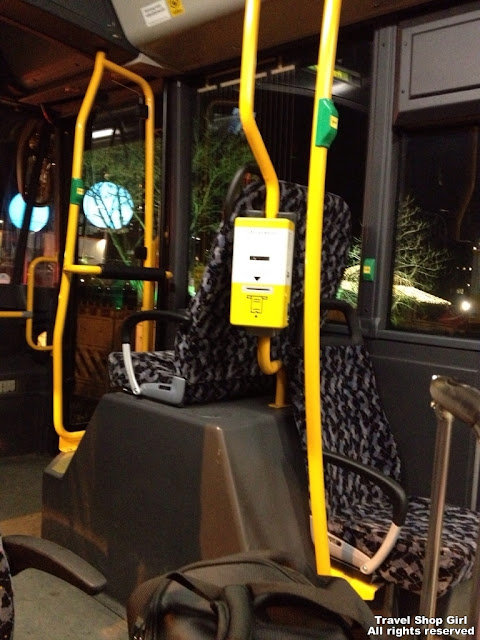
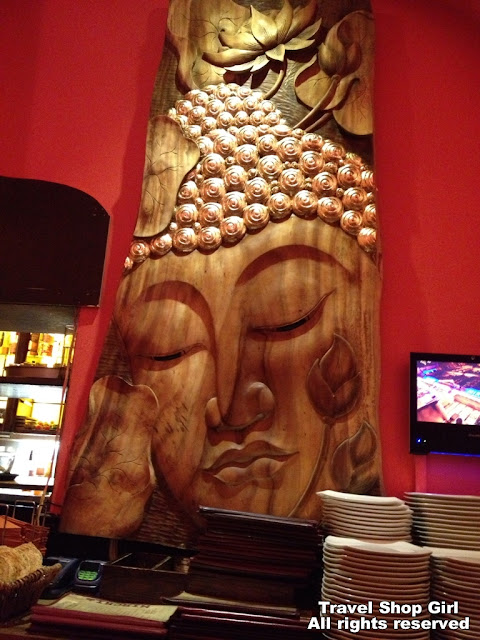
That meal looks yummy! We spent a day and a half in Berlin and it was a lot to see. Feel like I missed soooo much. Can’t wait to hear more about your trip.
Thanks Sonja! We devoured that food — omg it was so good!